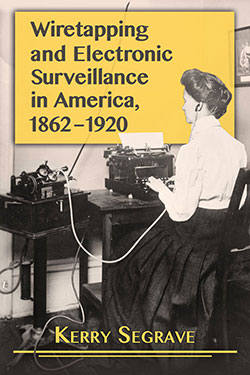Wiretapping and Electronic Surveillance in America, 1862–1920
Original price was: $29.95.$14.99Current price is: $14.99.
In stock
About the Book
Following the 2013 revelations of Edward Snowden, Americans have come to realize that many of us may be under surveillance at any time. It all started 150 years ago on the battlefields of the Civil War, where each side tapped the other’s telegraph lines. It continued in 1895, when the New York Police Department began to tap telephone lines. It was 20 years before it was public knowledge, and by then the NYPD was so busy tapping they had a separate room set aside for the purpose. Wiretapping really took off in 1910, when the dictograph—the first ready-to-use bug that anyone could operate—arrived, making it easier still to engage in electronic surveillance. Politicians bugged other politicians, corporations bugged labor unions, stockbrokers bugged other stockbrokers, and the police bugged everybody. And we were well on our way to the future that George Orwell envisioned, the world Edward Snowden revealed: Big Brother had arrived.
About the Author(s)
Bibliographic Details
Kerry Segrave
Format: softcover (6 x 9)
Pages: 232
Bibliographic Info: 28 photos, notes, bibliography, index
Copyright Date: 2014
pISBN: 978-0-7864-9624-2
eISBN: 978-1-4766-1740-4
Imprint: McFarland
Table of Contents
Table of Contents
Preface 1
Introduction 3
1. The Civil War 5
2. Stealing Electricity 12
3. Worries About Privacy 19
4. Wiretapping the Bookies 24
5. Wiretapping the Markets: Stocks, Commodities and Bucket Shops 64
6. Wiretapping Other Businesses 82
7. Wiretapping Labor 98
8. Wiretapping: Other Crimes and Personal Use 107
9. Wiretapping: Politics, Laws and Police 112
10. Dictograph: the First Bug 141
Chapter Notes 193
Bibliography 205
Index 215
Book Reviews & Awards
“The history of wiretapping starting with tapped telegraph lines during the Civil War.”—Library Journal.





